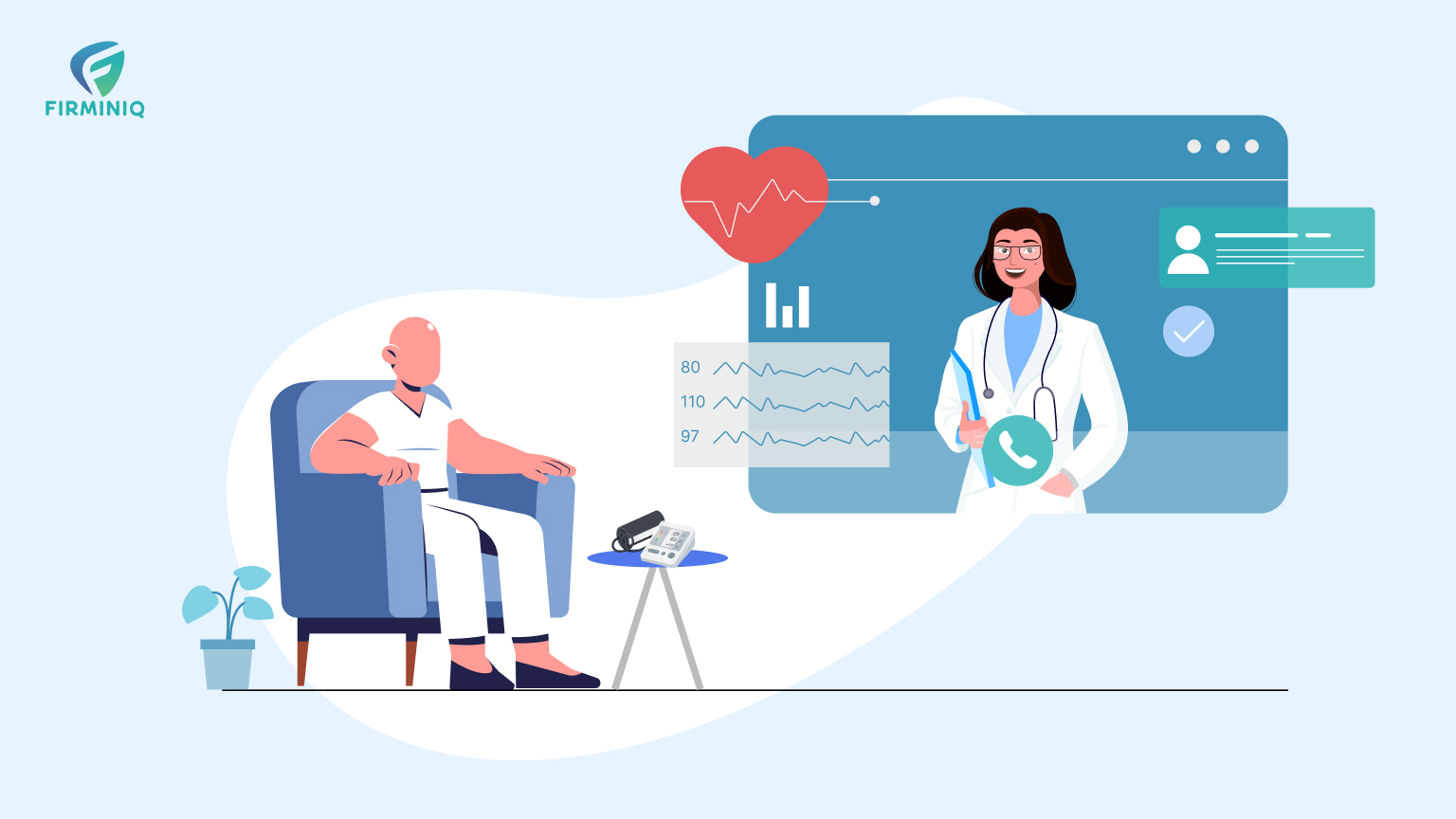Technological advancements in healthcare play a pivotal role in enhancing patient care, improving health outcomes, and optimizing resources. One of the tech advancements in healthcare is RPM, which is a transformative approach that monitors a patient’s health status, vitals, and symptoms in the comfort of a patient’s home while enabling proactive intervention and personalized care.
RPM facilitates continuous monitoring, medication adherence, and symptom progression. Highlighting the importance, “The global remote patient monitoring system market size was estimated at USD 5.2 billion in 2023 and is expected to register a compound annual growth rate (CAGR) of 18.6% from 2024 to 2030.”-Grand View Research
The growing demand for RPM is fueled by its ability to tackle vital healthcare needs like improved access to healthcare, reduced healthcare costs, patient engagement and satisfaction, chronic disease management, and more. RPM emerges as a transformative solution in the healthcare landscape, revolutionizing the way patients’ health is monitored and managed. Its usage has witnessed a significant surge as more healthcare providers and patients recognize its value and benefits.
Let us delve deeper into the use cases and applications of RPM in healthcare and uncover the impact of how it helps improve health outcomes while optimizing resources in healthcare.
Applications and Use Cases of RPM
RPM has plenty of applications that significantly boost healthcare delivery and improve overall patient outcomes. Let us explore some of the key use cases:
1. Chronic Disease Management
RPM extensively helps in managing chronic diseases as patients suffering from diabetes, hypertension, and other chronic conditions can seamlessly monitor their vitals and symptoms. Real-time tracking of vitals by physicians and patients allows them to intervene early and prevent complications to improve patient outcomes. If you want more information on how RPM can help in chronic care management, also read
How do RPM (Remote Patient Monitoring) Solutions Help in Monitoring Chronic Diseases
Whether it is heart rate monitoring, blood pressure, or glucose levels, RPM offers timely interventions and allows physicians to customize plans as per the patient’s needs.
For example, if a patient is suffering from the respiratory disorder COPD (Chronic Obstructive Pulmonary Disease), medical devices can be integrated that help measure oxygen saturation level in the blood. Oxygen level tracking helps providers and patients to track their respiratory status and helps improve patient’s quality of life.
2. Mental Health Monitoring
Mental health is one of the significant concerns, often overlooked by societal conversations. The traditional approach, which heavily relied on in-person visits to physicians, posed a significant challenge for introverted individuals. Thanks to RPM, that proved to be a game changer for individuals with anxiety, depression, and other health conditions.
With the help of wearable devices and sensors, clinicians can seamlessly gather real-time data for the patient’s well-being including individual mental health, sleep pattern, activity level, and more. The physiological data offers a holistic picture of the individual’s mental health status and facilitates treatment accordingly.
For example, our brain is linked to the nervous system, and it is assumed that reduced heart rate variability (HRV) is related to stress and mental health issues. So, with a lower level of HRV, there may be a feeling of loneliness, depression, and anxiety. By integrating ECG technology, healthcare providers can be notified of higher/lower levels of HRV.
3. Post-Operative Care
Post-operative recovery is a critical phase as the patient needs appropriate care while adhering to the treatment plans. Here, RPM offers valuable help in managing the patient’s condition.
Integrating wearables and other devices helps with continuous tracking of data in real-time, preventing any sort of complications. Real-time data tracking allows physicians to detect early signs of deterioration and intervene promptly. Timely intervention can help prevent complications while reducing the likelihood of hospital readmissions.
A study from BMC findings suggest that post-hospitalization RPM has the potential to enhance health outcomes, particularly in reducing 6-month mortality rates, for selected patient populations with chronic medical conditions such as congestive heart failure (CHF) and COPD.
4. Support for Elderly
RPM offers a proactive approach to healthcare that ensures the elderly receive support in the comfort of their homes. Older adults can communicate with their physicians anytime via chat/call reducing the need for frequent hospital visits.
Also, RPM facilitates early detection of deterioration, and risk of potential emergencies, which leads to better quality of life for the patients.
5. Clinical Trials
The integration of RPM technology in clinical trials has proved to be a game changer for the researchers. It seamlessly collects the data in real-time, while reducing the time and resources needed for study.
Moreover, the ability to monitor patient data in real-time facilitates quick and precise decision-making, while enhancing the effectiveness of the clinical trial process.
With RPM usage, researchers can seamlessly monitor the patient’s conditions while offering them a complete picture of their health status. With continuous monitoring, patient safety is improved, and researchers can have more accurate data, leading to the right outcomes.
6. Navigating Crisis like COVID
During situations like COVID, RPM offers remote access, especially in the areas with restricted access to healthcare facilities. Real-time tracking helps prioritize care and ensure patients receive timely intervention, even during challenging situations.
During the crisis (COVID-19) outbreak, RPM offered remote access to the patients and physicians and offered vitals in real-time to both. They could efficiently allocate resources, and manage patient conditions promptly, allowing for timely interventions and adjustments to treatment plans. During the tough times, RPM not only ensured care continuity but also brought more adaptability and dependency to the healthcare systems.
Beyond the above-outlined applications, RPM finds its usage in various other scenarios like high-risk pregnancies, allowing for close monitoring of maternal and fetal health parameters, and preventive healthcare, where it can be utilized for health and wellness monitoring and more.
Epilogue
While RPM has many applications in healthcare, it becomes evident that it stands at the forefront of technological innovation, while revolutionizing patient care. From managing chronic conditions to clinical trials, post-operative care, and mental health monitoring, RPM in healthcare is a transformative approach that rises above geographical barriers and allows patients to take care of their health.
Develop a robust RPM solution and harness its power to create a world where every patient receives personalized care, monitoring, and improved quality of life. Reach out to us for more details.







